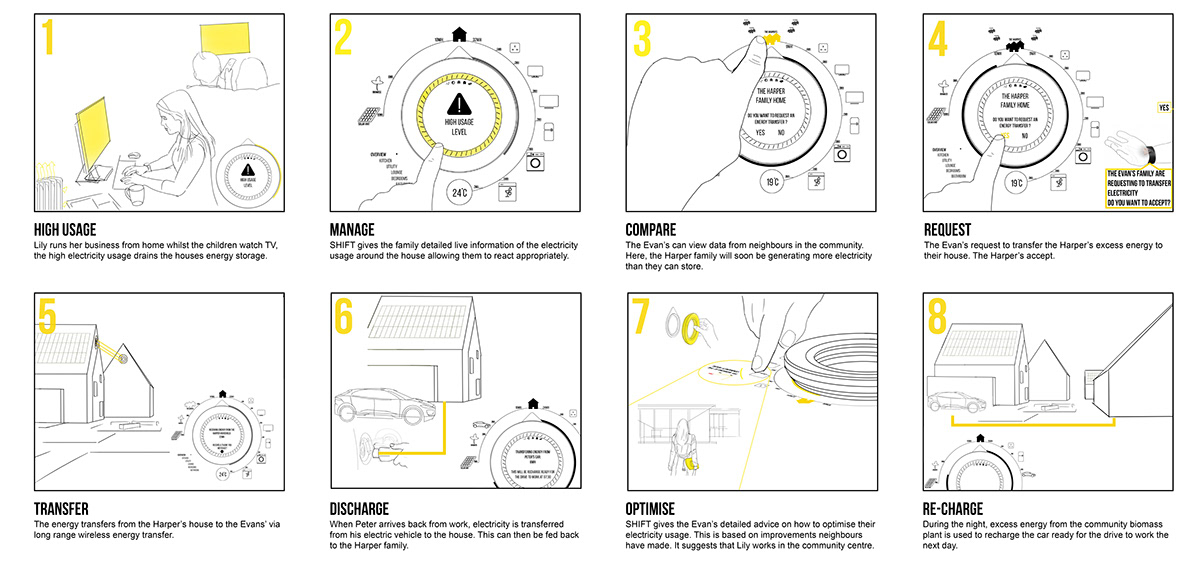
This group design innovation project started by researching issues potentially facing the world in the next 15 years. The housing crisis was identified as a prominent issue and the rise of people turning to off-grid living was chosen as a landscape for innovation. WWF was selected as a brand which could benefit from a brand repositioning. Once individual challenges within off-grid living had been identified, each group member designed one of 5 products to reposition WWF.
Future Trend
The rise of off-grid living
There is a global housing crisis, people are looking for alternative methods of living
Brand Repositioning
WWF is at the forefront of protecting species
How can WWF better enable people to transition into and sustain an off-grid way of living as a solution to the growing housing crisis?
Design Innovation
Managing a limited energy supply
Enabling the free-flow of electricity within an off-grid community, using micro-grid technology and wireless energy transfer, where sharing currently isn’t possible.
Visual Direction
A series of products inspired by the communities they help
Design a product as part of a series of five.
Bold black and white contrasting colours symbolises the work of WWF.
Wood sourced from off-grid communities ties the product to its home.


SHIFT consists of a touch sensitive 360° projected display and rotating display mode ring. SHIFT’s default position is on the wall mount, however, it can be removed and projected onto any surface for enhanced interaction.

SHIFT gives residents detailed information of the electricity storage and usage around the house. If levels are low, they can request electricity from neighbours. SHIFT also facilitates electricity transfer from an electric vehicle to a house in order to return electricity to neighbours. The electric vehicle can then be recharged at night with excess community electricity.



